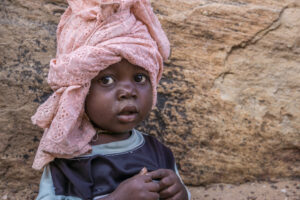Sustainable Peacebuilding in Northern Mali
by Charlotte Bednarski
October 26, 2020
There is a long history of contentious identity division in Mali. After three years of separatist fighting in Northern Mali, Algeria brokered a peace deal between Bamako and the two main coalitions of northern armed groups in 2015. The deal was generally seen as a progressive step towards national peace and unity. However, a significant increase in the presence and control of violent extremist (VE) groups and foreign terrorist fighters in the region has since stalled the deal’s implementation.
The political and economic frustrations that existed in central and northern Mali before the rise of VE groups remain unresolved and are now contributing to this new wave of violence as VE groups appeal to long-standing feelings of marginalization held by these communities. In light of a shifting security apparatus, any future attempts to implement the existing peace deal or address new dynamics of extremism must target issues of limited economic opportunity, lacking political representation, and poor resource management, all of which are contributing to rising extremism in central and northern Malian communities.
For decades, Mali’s national economic policies have largely benefitted southern, agrarian economies and livelihoods over pastoral nomadic lifestyles that are more present in central and northern communities. Lack of infrastructure and investment, state absence, and resource scarcity have all contributed to a deteriorating economic situation in these regions. Many pastoralists, who view the government as repressive and unresponsive to their needs, are now drawn to VE groups, who promise unprecedented opportunities for jobs and security. In other words, failure to adequately represent herding communities in national economic policy is fueling an already critical security situation. The 2015 Mali Peace Accord outlines plans to reform state institutions and ensure regional representation. By expanding the scope of the deal to include stakeholders and ethnic communities relevant to the current conflict landscape, the deal could allow local leaders to advocate for the unique needs of herding communities and incorporate central and northern input in future national economic development frameworks.
To further limit the appeal of VE groups, rebuild trust between central and northern communities and the national government, and address the needs of herding communities in a sustainable and meaningful fashion, these modes of regional representation need to be adapted to the distinct organizational structures of pastoral communities. While the 2015 Peace Accord does outline plans to develop new local governance mechanisms, these efforts have not yet been realized. To this end, institutions of collective action, or pastoral associations, can elevate pastoralists’ voices in national policy debates and streamline the provision of services, including access to water, education, and veterinary services.
Moreover, forced migration and population growth in the Sahel is exacerbating resource competition and upending customary forms of resource management between farmers and herders. VE groups are capitalizing on this increased conflict to recruit from pastoral communities and justify violence against sedentary groups. In light of these developments, the national government should promote new policies aimed at mitigating resource competition between communities. These might include investment in water delivery services, legally protecting grazing land, and working with regional bodies to address the needs of refugees in northern Mali. Although the 2015 Accord lays out a plan for a locally informed northern development strategy that could address issues of resource management, this effort needs to be connected to a national commitment to northern economic development. In doing so, these efforts may advance local buy-in and incorporate valued input from the grassroots level.
Although Mali’s security landscape has shifted significantly in the last five years, the political and socio-economic issues targeted in the Accord remain relevant and are now contributing to intensified violence. Any efforts to reduce violent extremism should therefore be developed with attention to drivers of extremism within northern communities. To limit the appeal of VE groups and support central and northern communities, the Malian government should prioritize economic growth, political representation, and resource management by expanding the scope of the 2015 Peace Accord. By looking at conflict in northern Mali not only as a situation playing out between actors and specific groups but approaching peacebuilding by looking at the dynamics and power structures that are fueling tensions, stakeholders can address the long-standing tensions that have fueled conflict in Mali for decades.
The views, thoughts, and opinions in this blog belong solely to the author and are not representative of an official position or endorsement by the International Center for Religion & Diplomacy (ICRD).






 Skip to content
Skip to content

